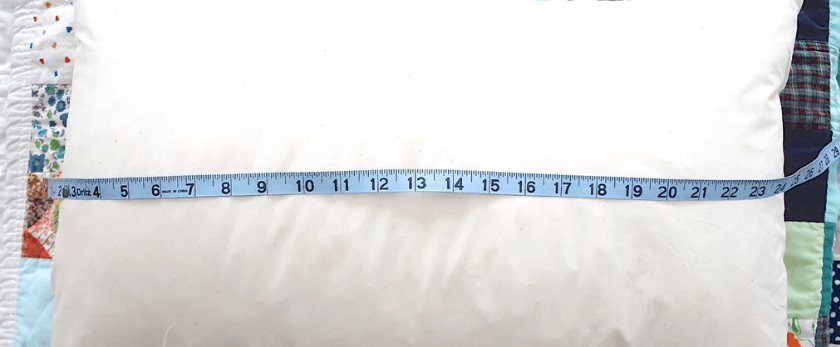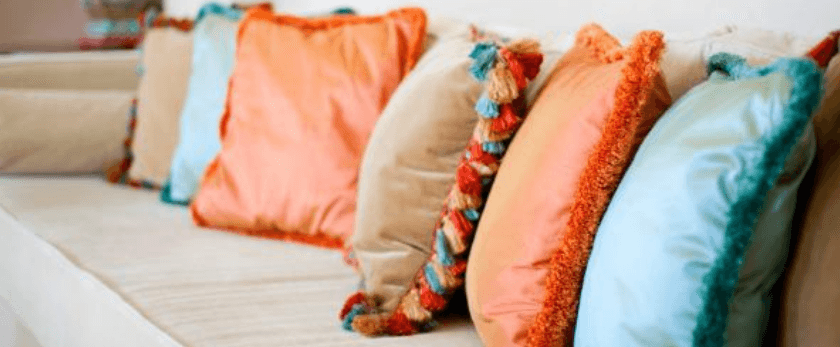In today's world, where environmental concerns are at the forefront of our minds, it's important to consider the impact of our daily choices on the planet. One area where we can make a positive change is in our home decor. Instead of buying new cushions, which often end up in landfills, why not make your own? Not only is it a fun and creative project, but it also helps reduce waste and promotes a more sustainable lifestyle. In this article, we'll discuss why making your own cushions is better for the environment, what you'll need, and provide step-by-step directions to help you create your own eco-friendly cushions.
Why Traditional Cushions are Bad for the Environment
Before we dive into the process of making your own cushions, let's first understand why traditional cushions are harmful to the environment. Most cushions are made from synthetic materials such as polyester, which is derived from non-renewable resources like petroleum. The production of these materials requires a significant amount of energy and emits harmful greenhouse gases into the atmosphere. Additionally, the manufacturing process often involves the use of toxic chemicals, which can pollute the air and water.
Furthermore, when these cushions are disposed of, they end up in landfills where they take hundreds of years to decompose. As they break down, they release harmful chemicals into the soil and water, contributing to pollution and harming wildlife. In fact, according to the Environmental Protection Agency, textiles, including cushions, make up 5% of all landfill waste in the United States.

Why Making Your Own Cushions is Better for the Environment
Making your own cushions is a simple and effective way to reduce your carbon footprint and promote a more sustainable lifestyle. By using eco-friendly materials and reusing old fabrics, you can significantly reduce the environmental impact of your home decor. Here are some reasons why making your own cushions is better for the environment:
-
Reduces waste: By repurposing old fabrics or using sustainable materials, you are diverting waste from landfills and reducing the need for new products to be manufactured.
-
Saves energy: Making your own cushions requires less energy than the production of new cushions. This helps reduce greenhouse gas emissions and conserves natural resources.
-
Promotes sustainable living: By choosing to make your own cushions, you are taking a small step towards a more sustainable lifestyle. This can inspire others to do the same and create a positive impact on the environment.
What You'll Need
Now that you understand the environmental benefits of making your own cushions, let's discuss what you'll need to get started. Here are the materials and tools you'll need:
-
Fabric: Choose a sustainable fabric such as organic cotton, hemp, or bamboo. You can also repurpose old fabrics from clothing, curtains, or bed sheets.
-
Cushion filling: Instead of using traditional polyester filling, opt for eco-friendly alternatives such as organic cotton, wool, or kapok.
-
Sewing machine: While you can hand-sew your cushions, a sewing machine will make the process faster and more efficient.
-
Scissors: A good pair of fabric scissors will make cutting your fabric easier and more precise.
-
Measuring tape: This will help you accurately measure your fabric and ensure your cushions are the right size.
-
Pins and needles: These will come in handy when sewing your fabric together.
-
Thread: Choose a thread that matches your fabric for a seamless finish.
-
Optional: Embellishments such as buttons, zippers, or trimmings can add a personal touch to your cushions.
Directions for Making Your Own Cushions
Now that you have all the necessary materials and tools, it's time to start making your own cushions. Follow these step-by-step directions to create your own eco-friendly cushions:
Step 1: Measure and Cut Your Fabric
Using your measuring tape, measure the dimensions of your cushion. Add an extra inch to each side for seam allowance. Then, using your fabric scissors, cut two pieces of fabric to the desired size.
Step 2: Pin and Sew the Fabric Together
Place the two pieces of fabric together, with the right sides facing each other. Pin the edges together, leaving a small opening for stuffing. Using a sewing machine or hand-sewing, sew along the edges, leaving the opening unstitched.
Step 3: Stuff Your Cushion
Turn your cushion inside out through the opening and stuff it with your chosen filling. Use your fingers to evenly distribute the filling and ensure there are no lumps.
Step 4: Close the Opening
Once your cushion is fully stuffed, use a needle and thread to close the opening with a simple stitch. Make sure the stitches are tight and secure.
Step 5: Add Embellishments (Optional)
If you want to add buttons, zippers, or trimmings to your cushion, now is the time to do so. This step is optional but can add a unique touch to your cushions.
Congratulations, you have now successfully made your own eco-friendly cushion! Repeat these steps to create as many cushions as you need for your home.
Responsible Disposal of Old Cushions
If you have old cushions that you no longer need, it's important to dispose of them responsibly. Here are some options for responsible disposal:
-
Donate: If your cushions are still in good condition, consider donating them to a local charity or thrift store.
-
Repurpose: You can repurpose old cushions by using the filling for other projects or cutting up the fabric to use as cleaning rags.
-
Recycle: Some recycling facilities accept textiles for recycling. Check with your local recycling center to see if they have a textile recycling program.
By responsibly disposing of your old cushions, you can prevent them from ending up in landfills and contribute to a more sustainable future.
Conclusion
Making your own cushions is a simple and effective way to reduce your environmental impact and promote a more sustainable lifestyle. By using eco-friendly materials and reusing old fabrics, you can create beautiful and unique cushions while also reducing waste. So why not give it a try and make your own cushions today? Your wallet and the planet will thank you.










